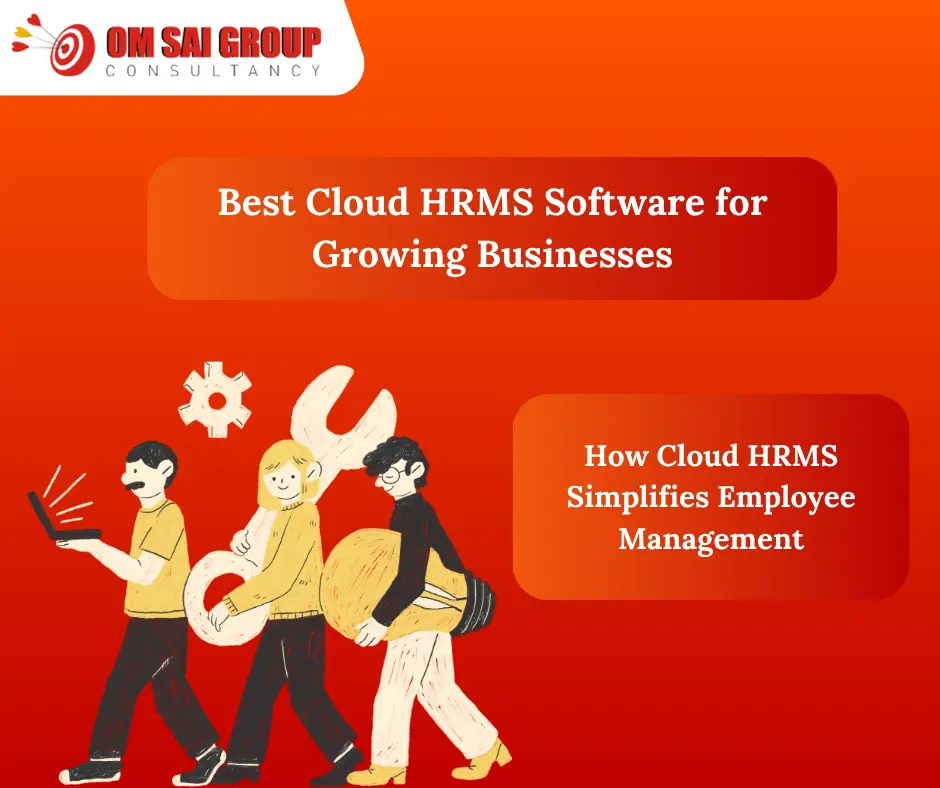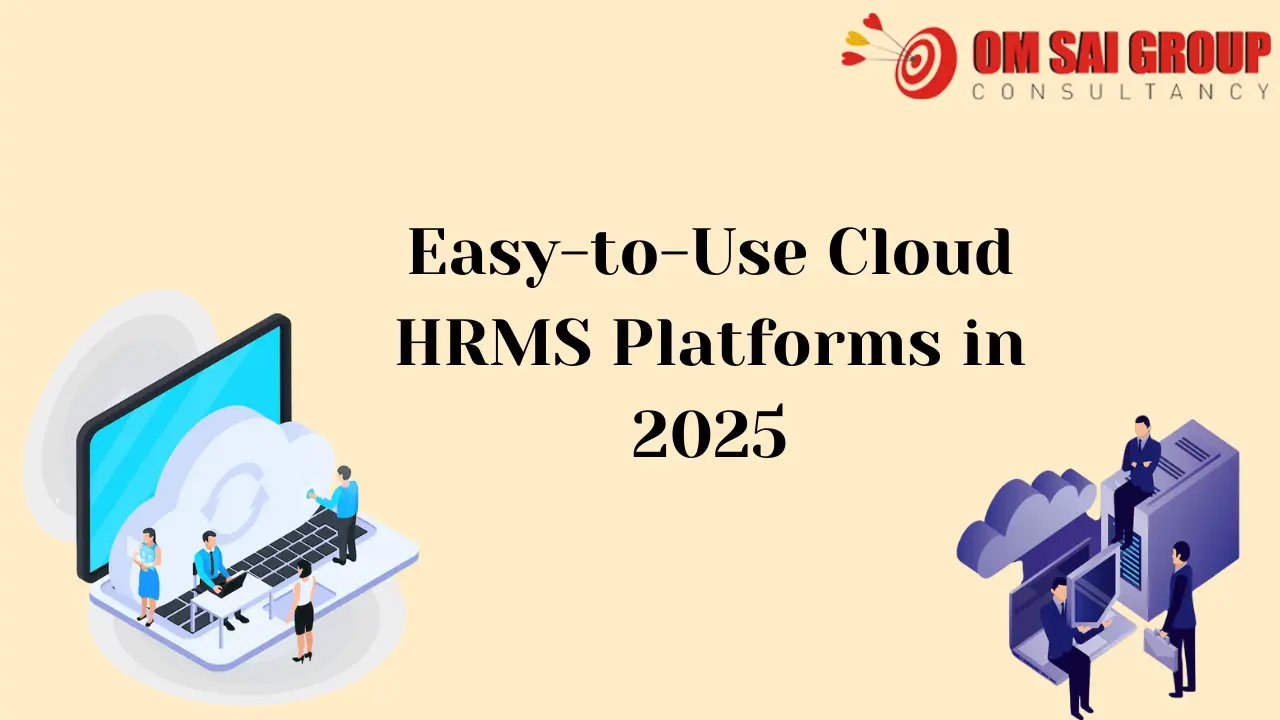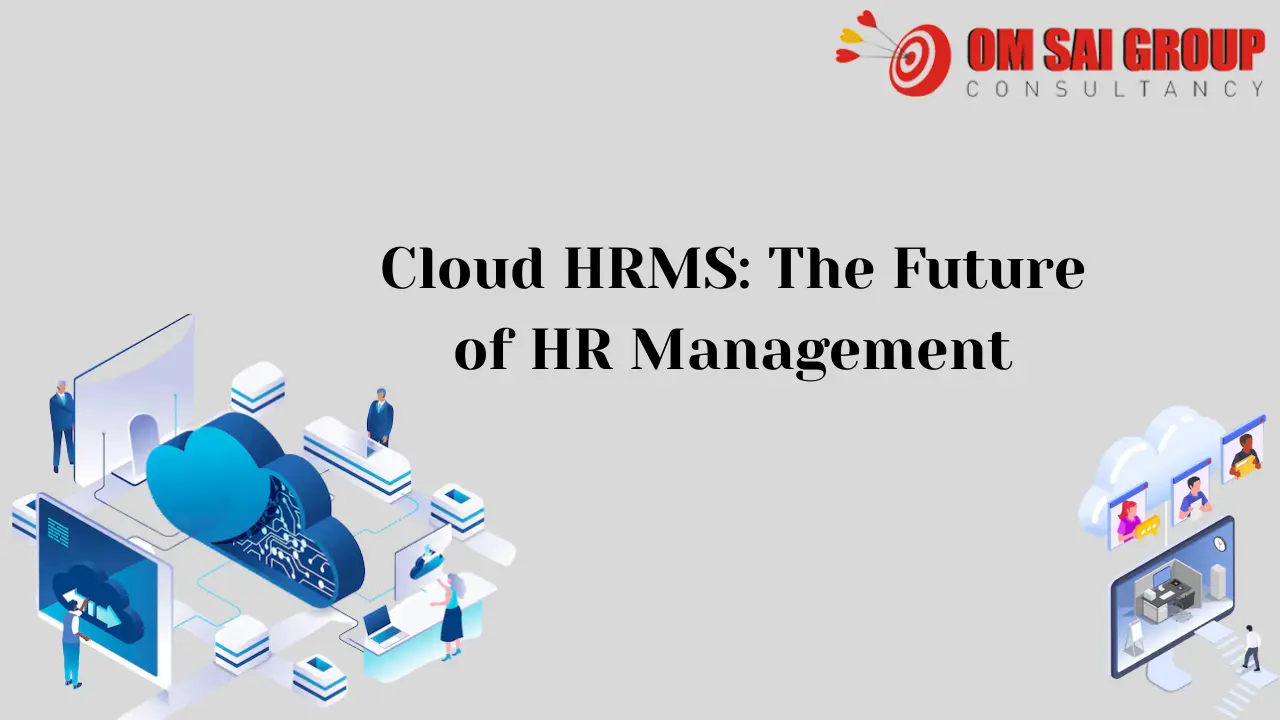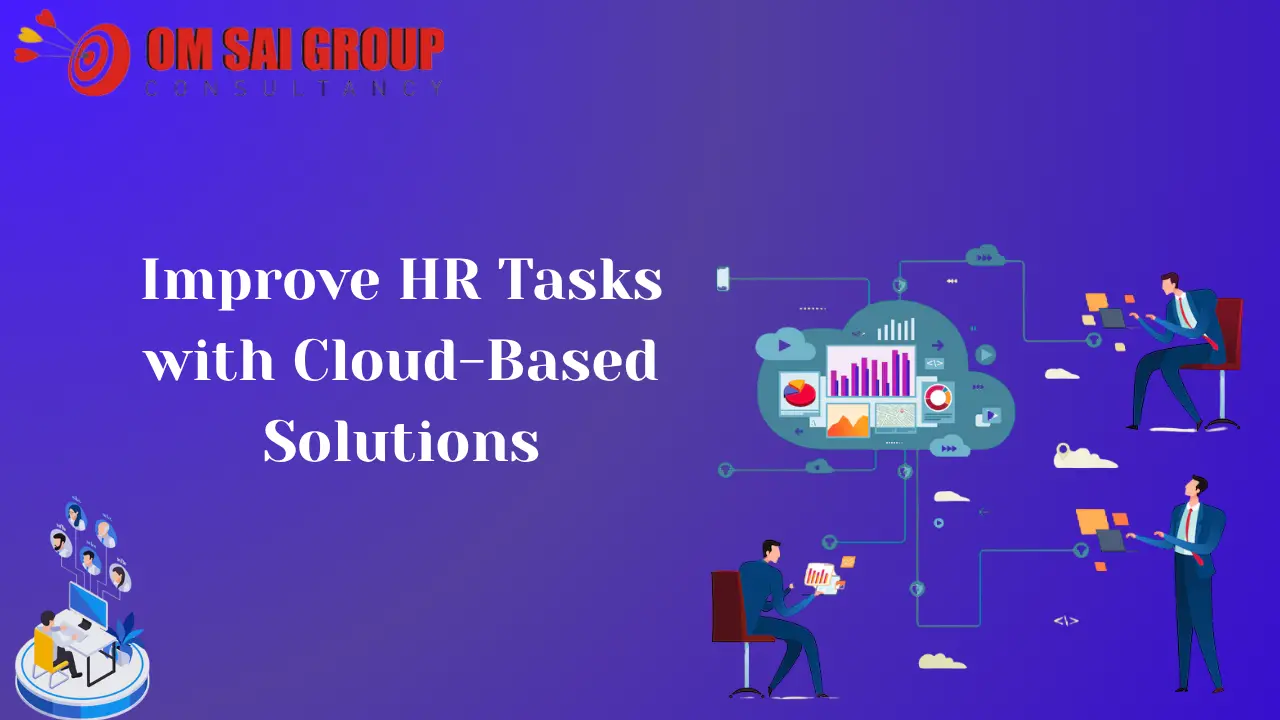
Revolutionizing Human Resource Management in the Digital Era
Why Switching to Cloud-Based HRMS is a Strategic Move for Modern Enterprises
Operational agility is no longer a privilege, but a requirement in today’s rapidly changing business world. Placement Service Businesses of any size or sector are working with a workforce that needs to respond fast, accurately, within compliance guidelines, and be agile. At the heart of this change is a vital tool: the Cloud-Based HRMS.
Those days of human resources being solely dependent on vast spreadsheets, paper records, and legacy software are gone. The move toward cloud solutions is not merely digitalization; it’s a transformation in the manner in which HR processes are performed, analyzed, and streamlined. Businesses that have adopted platforms such as Zoho HRMS, Zoho Payroll, and greytHR login have seen tangible gains in efficiency, accuracy, and employee satisfaction. Cloud-based HRMS
However, most companies continue to struggle with legacy systems—systems that isolate data, require laborious updates, and threaten to lead to compliance errors. The consequences of this are dire: missed deadlines, ineffective workforce planning, and ill-informed strategic choices. More than ever, embracing cloud-based HR technology is becoming an operational necessity.
Let us go deep into the five revolutionary advantages that a Cloud-Based HRMS provides to companies willing to take their HR function from administrative to strategic.

1. Centralized Data Access & Real-Time Synchronization
Imagine an ecosystem where your employee records, payroll history, leave applications, appraisal reports, and compliance documents all reside in one unified portal—accessible anytime, anywhere. That’s not a fantasy; it’s the core of cloud based HRMS examples like Zoho People and greytHR employer login. Cloud-based HRMS
Even if your HR department works from the central location or remotely from a different time zone, cloud HRMS solutions offer single-point dashboards with instant updates. This keeps all stakeholders aligned, and miscommunication and data redundancy are a thing of the past. Cloud-based HRMS
The era of managing disparate Excel sheets, physical records, or piecemeal software for various HR activities is gone. With user-friendly interfaces, secure log-in, and mobile accessibility, applications such as Zoho Mail also add to effortless communication within teams.
2. Enhanced Compliance and Data Security
Non-compliance with labor legislation, payroll laws, or data security regulations can bring fat fines and damage reputations. Cloud-based HRMS solutions are equipped to remain compliant with constantly evolving legal guidelines.
Software like Zoho Payroll has tax laws, statutory deductions, and compliance checklists automatically built into payroll processing. Likewise, greytHR login options have automated PF, ESI, and income tax calculations that lower human error substantially. Cloud-based HRMS
Furthermore, cloud HRMS solutions tend to include sophisticated encryption, multi-factor authentication, and routine data backup. This greatly reduces the threat of data breaches or unauthorized access—a significant worry in conventional, locally-hosted HR software.
And on top of all that, being able to access an all-encompassing cloud based HRMS pdf can provide HR executives a visual reference to learn about how to utilize robust security measures and audit trails with cloud architecture. Cloud-based HRMS
3. Scalability and Customization for Growing Businesses
Regardless of whether your business is a 50-person startup or a 5000-strong corporation, your HR system needs to scale seamlessly. Older HR software tends to require costly upgrades or fresh installations to keep pace with business expansion. Cloud-based HRMS
Conversely, cloud HRMS solutions such as Zoho HRMS and greytHR employer login are designed to scale. Increasing new users, developing new departments, or adding third-party applications is a matter of configuration, not capital investment. Staffing solutions
In addition to the above, there is immense customization possible. Need to adjust your performance appraisal modules? Revise leave policies for varied employee groups? Integrate with accounting or CRM solutions like Zoho Mail? A strong cloud HRMS makes it all possible without disrupting operational continuity. Cloud-based HRMS

4. Automated Workflows and Reduced Manual Intervention
Repetitive administrative processes such as leave approvals, reimbursement tracking, or onboarding paperwork eat up a large part of HR bandwidth. Cloud-based HRMS solutions automate these workflows through smart workflows.
Consider for instance, Zoho People: one can have dynamic workflows where auto-routing of leave applications to reporting managers, pre-defined escalation of approvals, and real-time notifications are possible. GreytHR login users also have such features with document generation, digital signatures, and payroll reminders scheduled to execute independently. Cloud-based HRMS
The end result? A radical drop in administrative overhead, greater emphasis on strategic HR activities such as talent building and engagement, and better employee experience.
5. Advanced Analytics for Strategic Decision-Making
With the digital economy, data is power. Cloud-based HRMS solutions don’t merely collect information—they convert it into data-driven insights.
From attrition patterns to performance measures, engagement scores to diversity ratios in the workforce, these systems offer in-depth dashboards and reports that can be exported to equip leadership to make informed decisions. Cloud-based HRMS
With cloud based HRMS pdf tools, organizations are now equipping their HR professionals not only to read and understand analytics but even to interpret them. With integration on platforms such as Zoho HRMS, companies can map employee information against sales performance, customer satisfaction, and even innovation outputs. Cloud-based HRMS
In a time when the role of HR is no longer limited to recruitment and regulatory adherence, but is also charged with contributing to bottom-line results, such analytics prove priceless.
The Final Word: Embrace the Future of HR Operations
The shift to cloud HRMS is not a mere upgrade—it’s an investment. manpower Service Companies who have welcomed software such as Zoho HRMS, Zoho Payroll, and greytHR employer login have seen increased HR productivity, reduced errors, and improved workforce morale. Cloud-based HRMS
In an extremely competitive talent ecosystem, the capability to provide seamless onboarding, precise payroll, flexible policies, and real-time employee support is what can really make a difference. You’re a decision-maker, HR leader, or business owner — the facts are undeniable: cloud HRMS is changing the face of work. Cloud-based HRMS
It’s time to move away from traditional systems and adopt a solution that expands as your business does, adapts as technology does, and keeps pace with global compliance regulations. Begin researching cloud based HRMS examples and learn how solutions like Zoho People, greytHR login, and Zoho Mail can make your HR function a force to be reckoned with in terms of efficiency and strategy. Cloud-based HRMS

Frequently Asked Questions
1. What is cloud-based HRM?
Cloud-based Human Resource Management (HRM) refers to hosting HR software and data on remote servers, accessed via the internet. Instead of on-premise hardware, it uses a network of data centers, offering greater flexibility and scalability. This approach allows HR professionals and employees to access information like payroll, benefits, and performance data anytime, anywhere. It eliminates the need for manual software updates and reduces IT overhead. Key benefits include improved data security, seamless integration with other applications, and real-time access to workforce analytics for better decision-making. Cloud-based HRMS
2. Is HRIS cloud-based?
An HRIS (Human Resource Information System) can be either on-premise or cloud-based, but modern systems are predominantly cloud-based. Traditionally, HRIS software was installed on a company’s own servers. Cloud-based HRMS However, the industry has shifted towards the cloud model due to its flexibility, scalability, and cost-effectiveness. A cloud-based HRIS offers the same core functions—like managing employee data, payroll, and benefits—but delivers them over the internet. This ensures easier access, automatic updates from the vendor, and robust data security without requiring significant in-house IT infrastructure. Recruitment Agencies
3. What is SaaS-based HRMS?
A SaaS-based HRMS (Human Resource Management System) is a specific type of cloud computing where organizations subscribe to HR software instead of buying it. SaaS, or “Software as a Service,” means a third-party provider hosts and maintains the application and data. Cloud-based HRMS Companies pay a recurring subscription fee for access via a web browser. This model lowers upfront costs, simplifies deployment, and ensures the system is always up-to-date. It’s an all-in-one solution for managing payroll, recruitment, attendance, and other core HR functions efficiently.
4. एचआरआईएस क्लाउड आधारित है? (Is HRIS cloud-based?)
एक एचआरआईएस (मानव संसाधन सूचना प्रणाली) ऑन-प्रिमाइसेस या क्लाउड-आधारित दोनों हो सकता है, लेकिन आधुनिक प्रणालियाँ मुख्य रूप से क्लाउड-आधारित होती हैं। परंपरागत रूप से, एचआरआईएस सॉफ्टवेयर को कंपनी के अपने सर्वर पर स्थापित किया जाता था। हालाँकि, अब उद्योग क्लाउड मॉडल की ओर बढ़ गया है क्योंकि यह अधिक लचीला, स्केलेबल और लागत-प्रभावी है। एक क्लाउड-आधारित एचआरआईएस कर्मचारी डेटा, पेरोल और लाभों के प्रबंधन जैसे मुख्य कार्य प्रदान करता है, लेकिन इन्हें इंटरनेट पर वितरित करता है, जिससे आसान पहुँच और स्वचालित अपडेट सुनिश्चित होते हैं।
5. सास आधारित एचआरएमएस क्या है? (What is SaaS-based HRMS?)
एक सास-आधारित एचआरएमएस (मानव संसाधन प्रबंधन प्रणाली) एक विशेष प्रकार की क्लाउड कंप्यूटिंग है, जहाँ संगठन एचआर सॉफ्टवेयर को खरीदने के बजाय उसकी सदस्यता लेते हैं। सास, यानी “सॉफ्टवेयर एज़ ए सर्विस,” का मतलब है कि एक बाहरी प्रदाता एप्लिकेशन और डेटा को होस्ट और रखरखाव करता है। कंपनियाँ वेब ब्राउज़र के माध्यम से एक्सेस के लिए एक आवर्ती सदस्यता शुल्क का भुगतान करती हैं। यह मॉडल अग्रिम लागत को कम करता है, परिनियोजन को सरल बनाता है, और यह सुनिश्चित करता है कि सिस्टम हमेशा अपडेट रहे।
